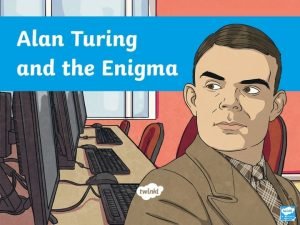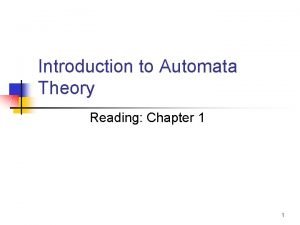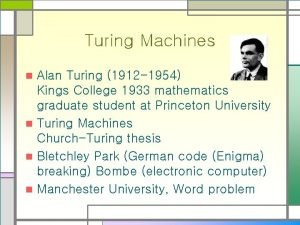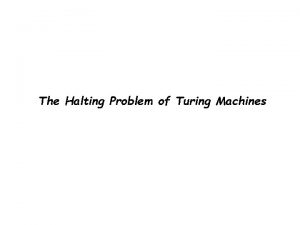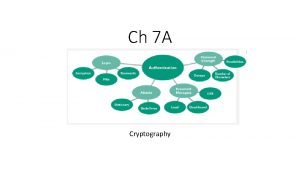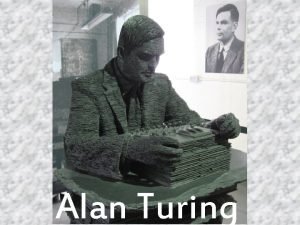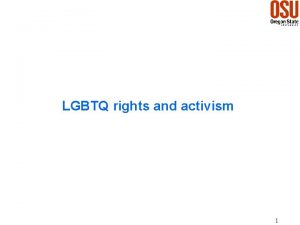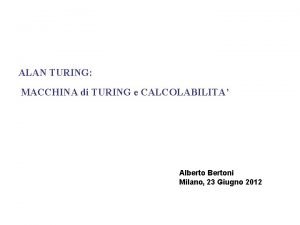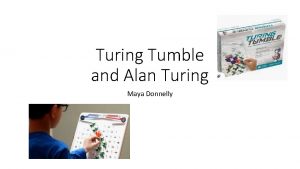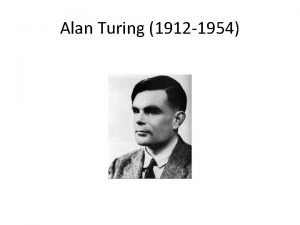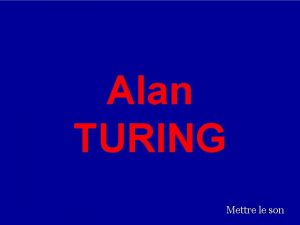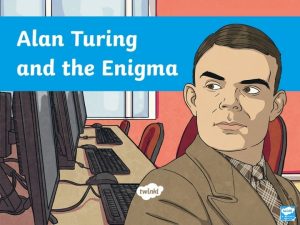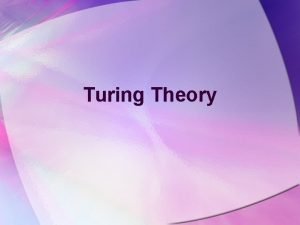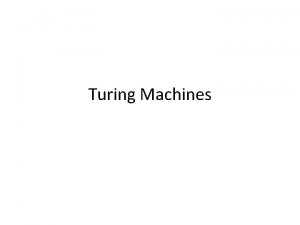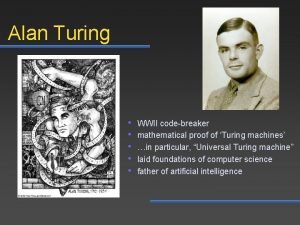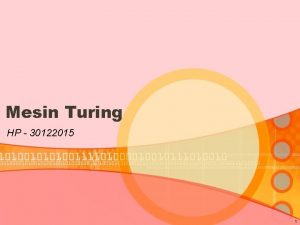Who Was Alan Turing Alan Turing was a












- Slides: 12


Who Was Alan Turing? Alan Turing was a British mathematician. During the Second World War, he worked as a codebreaker, cracking German codes created by Enigma machines. His work was pivotal in the Allies’ victory. Alan Turing was born on 23 rd June 1912. He had an older brother called John. Their father worked for the British civil service in India. Turing’s parents wanted their sons to be raised in Britain so the boys stayed with family friends while their parents were in India.

Alan Turing’s Education When Turing was 13, he went to a boarding school called Sherborne School. At the time, the school did not place much emphasis on mathematics and science so Alan felt quite discouraged. While at the school, his close friend Christopher Morcom died of a disease called tuberculosis. Turing’s grief inspired him to dedicate himself to scientific discoveries. He later won a scholarship to study mathematics at King’s College, Cambridge. He obtained a degree in mathematics with distinction.

The Universal Machine In 1936, Turing created the idea of a special machine that could follow simple codes. He called this the ‘Universal Machine’. These machines are now known as a ‘Universal Turing Machine’ and they formed a lot of the ideas behind computing.

Second World War Cryptanalysis is the study of encrypted messages. During the Second World War, Germany sent encrypted messages about its military strategies. To win the war, it was vital that the Allies were able to decode these messages. A team of workers at a place called Bletchley Park were set the task of decoding these messages. Encrypted – where information is changed into a code so it can only be understood by the recipient.

Second World War Not long after the First World War, a German named Arthur Scherbius invented a machine called the Enigma. The Enigma was a machine that looked like a typewriter. As you typed in your message, a different letter lit up. The message was converted into a code using these illuminated letters. The person receiving the message also had an Enigma. When they typed in the coded message, the letters from the original message lit up and it could be read. This meant that orders could be passed secretly.

Bletchley Park is a stately home in Buckinghamshire. During the Second World War, it was the home of the Government Code and Cipher School (GC&CS). Turing started work at Bletchley Park. Soon after his arrival, he had devised a way of cracking the German’s code. He invented something called a ‘Bombe’, which tried out lots of different solutions for breaking a code before finding the correct one. Although the ‘Bombe’ was successful, Bletchley Park didn’t have enough machines or the workers to read all the German messages. Turing wrote to the prime minister, Winston Churchill. Before long, Bletchley Park had more workers and more ‘Bombes’.

The Impact of Turing’s Work Breaking the German code meant the Allies knew when and where attacks were planned. Without Turing’s discovery, military experts believe that the Second World War could have carried on for another two years. Consequently, millions of lives were saved.

Turing’s Work Turing was awarded the OBE (Order of the British Empire) in 1946 for his wartime work. He died on 7 th June 1954. On 15 th July 2019, the Bank of England announced that Alan Turing’s image will be featured on the new £ 50 note, which is due to enter circulation in 2021.

Try It! Try making your own Enigma code. Swap each letter in the alphabet with another one. For example, ‘A’ might become ‘Q’ and ‘R’ might become ‘E’. Once each letter has been allocated a different letter, write a coded message to your partner. Give them some clues: tell them which letter represents ‘E’, ‘T’ and ‘H’. Can your partner work out the message? They might need to be given a few more letters.

Turing’s Tragedy Owing to the laws surrounding sexuality, Turing fought against prejudice through his life because he was homosexual. This led to him being arrested. Sadly, he died shortly after this on 7 th June 1954. In 2009, the British Government publicly apologised for the prejudice shown towards Turing.

 Joan clarke turing
Joan clarke turing Alan turing stake
Alan turing stake Alan turing education
Alan turing education Automata chapter 1
Automata chapter 1 Alan turing king's college
Alan turing king's college Alan turing computing machinery and intelligence
Alan turing computing machinery and intelligence What is the alan turing test
What is the alan turing test Alan turing halting problem
Alan turing halting problem Cryptography alan turing
Cryptography alan turing Alan turing infancia
Alan turing infancia Was alan turing married
Was alan turing married Noleggio auto riga
Noleggio auto riga Arnold murray alan turing
Arnold murray alan turing


